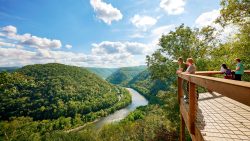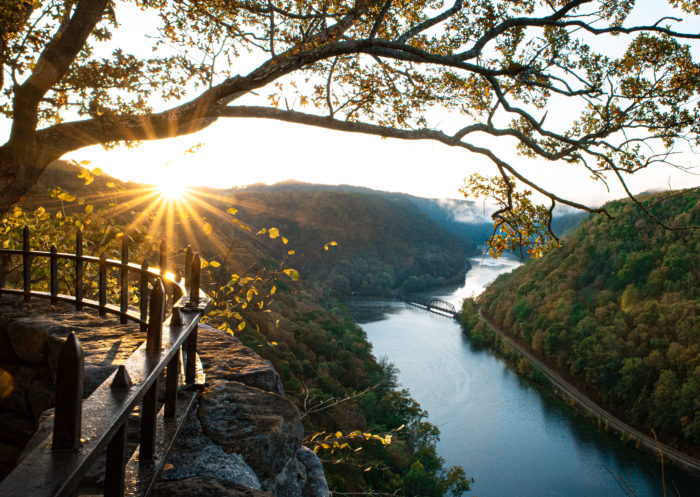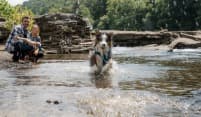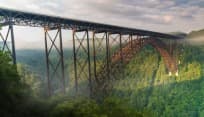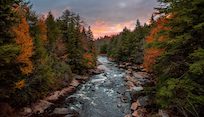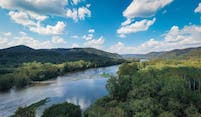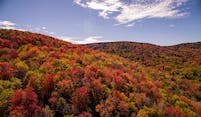Explore Hatfield-McCoy lore & country on the waters
There’s a new way to explore America’s best-known family feud.
We’re talking, of course, about the Hatfields and the McCoys. Randolph McCoy and his family lived on the the Kentucky side of the Tug Fork of the Big Sandy River, while Devil Anse and the Hatfields lived on the West Virginia side.
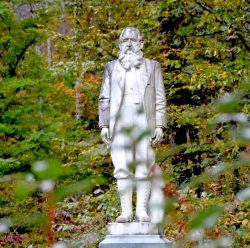
The feud began shortly after the Civil War, when Asa Harmon McCoy was killed by a group of Confederate Home Guards after returning from fighting for the Union side in 1865. Devil Anse Hatfield was the main suspect, even though it was later proven that he had been home sick at the time of the murder.
The Hatfields were wealthier and more politically connected than the McCoys, and relations between the 2 families became tense after the initial violence, even though they had a history of intermarriage and therefore, mutual family members. The feud was escalated to another level when Roseanna McCoy left her family to be with Johnse Hatfield. Gunfire, killings and all the drama of a 19th century soap opera ensued over the next handful of years, with more than a dozen members of both families killed between 1880-1891.
More than a century later, I roar past on an airboat, giggling with glee as it flies over the surface of the river. At the controls, with his son Javen next to him, Keith Gibson tells the story of just one of the Hatfield and McCoy conflicts that happened on the banks next to us. The only reason I can hear him over the 550 hp motor and the boat’s gargantuan fan is thanks to the headset and microphone I’m wearing. As he gives me the background to a story that has become known in Appalachia as the “The Paw Paw Tree Incident,” I point my camera at a stand of paw paw trees descended from the very same ones the Hatfield clan bound the McCoy boys to. I mash the shutter button a few times, then turn back toward the front of the boat.
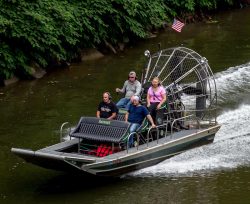
I don’t want to miss the history, but the feeling of weightless flight is hypnotic and addictive, especially in calm pools, where the mirror-smooth reflection of a cloud-speckled sky and the rolling hills whip by in a blur.
“It’s not uncommon to see several Great Blue Herons in a tour,” Keith says, and sure enough, as if on cue, a massive bird flaps its wings and takes flight from a rocky shoal, not even 100 meters ahead of us. The bird continues to fly upstream, and I watch the heron in wonder as Keith skillfully matches our speed to its. Against the backdrop of oak, willow and sycamore trees overhanging the river, a humid breeze blowing through my hair, I can’t help but imagine a primordial time when its dinosaur ancestors hunted these same skies.
“One,” I say aloud. We’ll see 7 Great Blue Herons before we return to the dock at Matewan, along with ducks, kingfishers, fish by the dozens, and 1 red-tail hawk nabbing one of those fish for lunch.
The boat sprays water into the air, creating a rainbow against the sun as we carve a turn in the river and pass Blackberry Creek, where the “Election Day Fight” occurred. That’s the one where 3 McCoy boys inflicted the wounds that would later claim Ellison Hatfield’s life.
We pass a railroad bridge and time it just right to tear underneath as a coal train rumbles overhead.
We pass another rickety-looking wooden foot bridge 35 or so feet above the river, connecting 2 halves of a golf course in 2 different states. The Tug Valley Country Club is the only one in America that requires golfers to tee up in 1 state and putt out in another— twice!
I’m lost in my thoughts as we continue upstream past pools and rapids, sometimes in water no more than 2 inches deep, into the heart of Appalachia to explore both the Tug and its special place in history.
When you’re finished with your ride, don’t just run off. You can throw a rock from one end of downtown Matewan to the other, but this tiny hidden jewel is packed with things to do, from grabbing a bite to eat at a restaurant to the quirky Historic Matewan House. Add to that its proximity to the famous Hatfield-McCoy ATV Trails, and you’ve got the makings of a uniquely historic weekend.
Find more boating adventures >
This post was last updated on December 20, 2024
